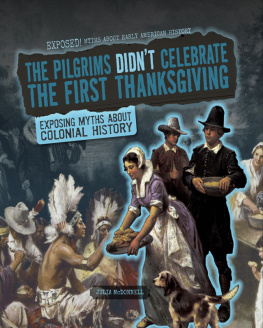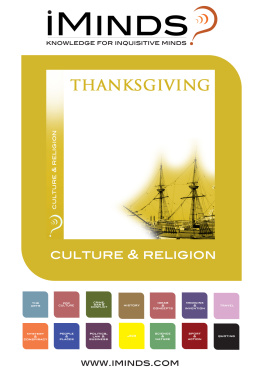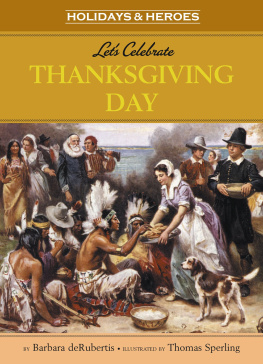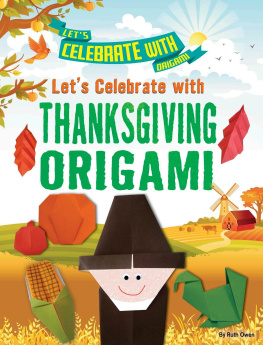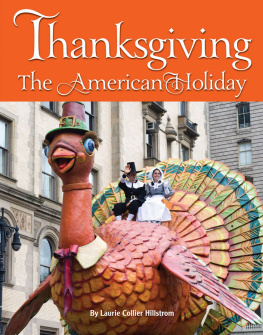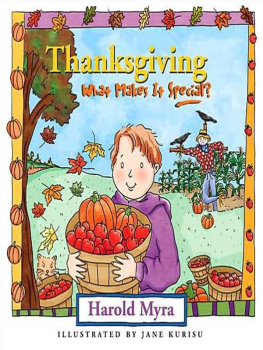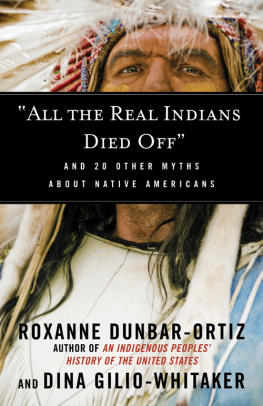
Please visit our website, www.garethstevens.com. For a free color catalog of all our high-quality books, call toll free 1-800-542-2595 or fax 1-877-542-2596.
Library of Congress Cataloging-in-Publication Data
Names: McDonnell, Julia, 1979- author.
Title: The pilgrims didnt celebrate the first Thanksgiving : exposing myths about colonial history / Julia McDonnell.
Description: New York : Gareth Stevens Publishing, 2017. | Series: Exposed! Myths about early American history | Includes index.
Identifiers: LCCN 2016037999| ISBN 9781482457339 (library bound book) | ISBN 9781482457315 (pbk. book) | ISBN 9781482457322 (6 pack)
Subjects: LCSH: United States--History--Colonial period, ca. 1600-1775--Juvenile literature. | United States--History--Errors, inventions, etc.--Juvenile literature.
Classification: LCC E187.2 .M33 2017 | DDC 973.2--dc23 LC record available at https://lccn.loc.gov/2016037999
First Edition
Published in 2017 by
Gareth Stevens Publishing
111 East 14th Street, Suite 349
New York, NY 10003
Copyright 2017 Gareth Stevens Publishing
Designer: Sarah Liddell
Editor: Therese Shea
Photo credits: Cover, p. 1 GraphicaArtis/Contributor/Archive Photos/Getty Images; background texture used throughout IS MODE/Shutterstock.com; ripped newspaper used throughout STILLFX/Shutterstock.com; photo corners used throughout Carolyn Franks/Shutterstock.com; p. 5 Kean Collection/Staff/Archive Photos/ Getty Images; p. 7 George Burba/Shutterstock.com; p. 9 Jon Bilous/Shutterstock.com; p. 11 (main) Ken Welsh/Getty Images; p. 11 (wood engraving) MarmadukePercy/Wikimedia Commons; p. 13 Charles Phelps Cushing/ClassicStock/Getty Images; p. 15 (Provincetown) LagunaticPhoto/Shutterstock.com; p. 15 (Plymouth Rock) Suchan/Shutterstock.com; p. 17 DEA/A. DAGLI ORTI/Contributor/De Agostini/Getty Images;
p. 19 Stefano Bianchetti/Contributor/Corbis Historical/Getty Images; p. 21 (house remains) Boston Globe/ Contributor/Boston Globe/Getty Images; p. 21 (house) Ogram/Wikimedia Commons; p. 23 Felix Lipov/ Shutterstock.com; p. 25 iStockphoto.com/duncan1890; p. 27 (map) Stock Montage/Contributor/Archive Photos/Getty Images; p. 27 (main) PhotoQuest/Contributor/Archive Photos/Getty Images; p. 29 Clindberg/ Wikimedia Commons.
All rights reserved. No part of this book may be reproduced in any form without permission in writing from the publisher, except by a reviewer.
Printed in the United States of America
CPSIA compliance information: Batch #CW17GS: For further information contact Gareth Stevens, New York, New York at 1-800-542-2595.
CONTENTS
Who discovered America? What was life like for the first colonists? How and where was the first Thanksgiving celebrated? You may think you know... but you may be wrong!
Historical facts can be misunderstood, changed, or forgotten as theyre shared through the years. Sometimes that happens by accident, and sometimes people do it on purpose in order to get others to think a certain way. As time passes, people may begin to believe myths rather than facts. Thats often true of American colonial history.
ISLAND EXPLORER
In 1492, Columbus only sailed to islands: the Bahamas, Cuba, and Hispaniola. It wasnt until his third trip, in 1498, that he reached a continent, arriving at whats now Venezuela in South America.
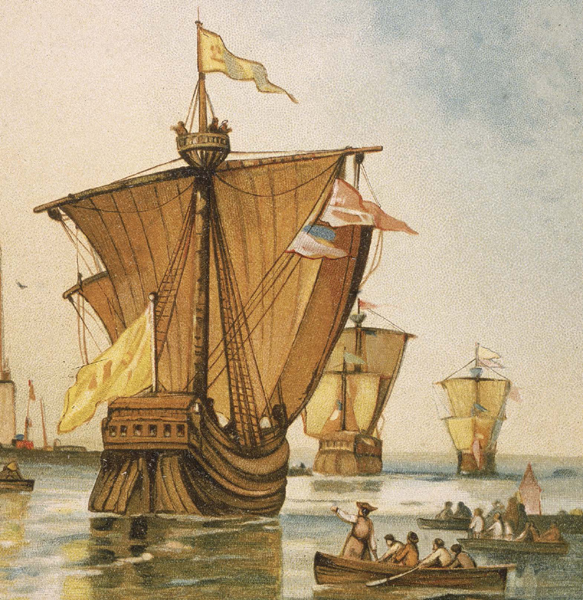
You might think you know that Columbus sailed the Nia, Pinta, and Santa Maria to the Americas. Thats partly true. Santa Maria was nicknamed La Gallega. Nias real name was actually Santa Clara, and Pinta s real name is unknown!
THE MYTH :
CHRISTOPHER COLUMBUS DISCOVERED AMERICA.
THE FACTS :
Christopher Columbus didnt discover the land that would become America. Millions of native people were already living there. Vikings from Greenland were the first Europeans known to have set foot on the North American continent. They landed around the year 1000.
Columbus gets the praise for the discovery because his travels opened up this territory to European countries. This led to European settlement in the New World and the beginning of the colonial period.
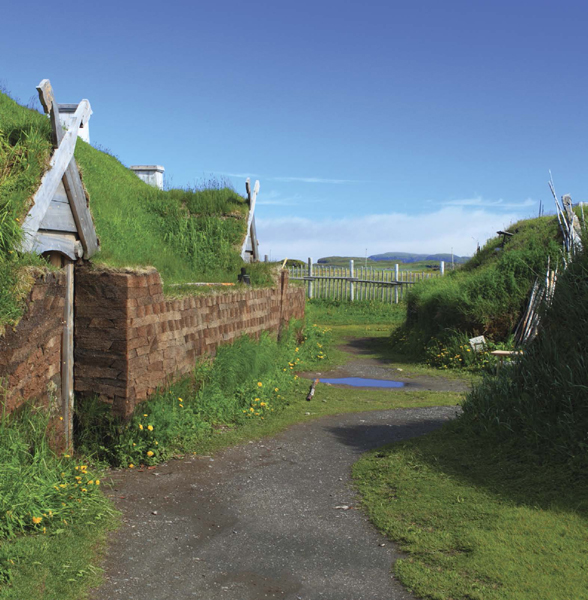
Newfoundlands LAnse aux Meadows National Historic Site offers a model of the Viking settlement. Vikings were ancient people from northern Europe known for trading, raiding, and exploring.
WHY AMERICA?
Columbus believed he had reached the East Indies, but Italian explorer Amerigo Vespucci recognized Columbus had reached a continent unknown to Europeans. In Vespuccis honor, mapmakers in the 1500s named the territory America.
THE MYTH :
FOUNDED IN 1620, PLYMOUTH, MASSACHUSETTS, WAS THE FIRST EUROPEAN COLONY IN THE NEW WORLD.
THE FACTS :
The people of St. Augustine, Floridaa city still standing todaywould disagree. Their city was established in 1565 by Spain. The Dutch had lived in the New Netherland colony (now New York) since 1614. Because much of the New World was won by England later, other countries colonial histories are often forgotten.
Even before Plymouth, the British founded Jamestown in Virginia in 1607. Other British colonies were settled, but later deserted, such as the Roanoke Colony in North Carolina.

This is the fort Castillo de San Marcos in St. Augustine. Think of how different the United States might be today if Spanish colonies had been more successful.
DONT FORGET FRANCE
Well before Plymouth, the French had short-lived colonies in Florida and Texas. They had better luck creating New France, a land that reached from Canada south to the Gulf of Mexico.
THE MYTH :
POCAHONTAS AND JOHN SMITH FELL IN LOVE, AND SHE SAVED HIS LIFE.
THE FACTS :
The member of the Powhatan tribes known as Pocahontas was only about 11 years old when the British arrived in Virginia in 1607. John Smith was a leader of Jamestowns colonists and twice her age. According to him, the Powhatan people held him prisoner and sentenced him to death. Just before he could be killed, she saved him.
Some think its possible that whatever happened was simply a welcoming ceremony. The Powhatan girl and Smith certainly didnt fall in love!
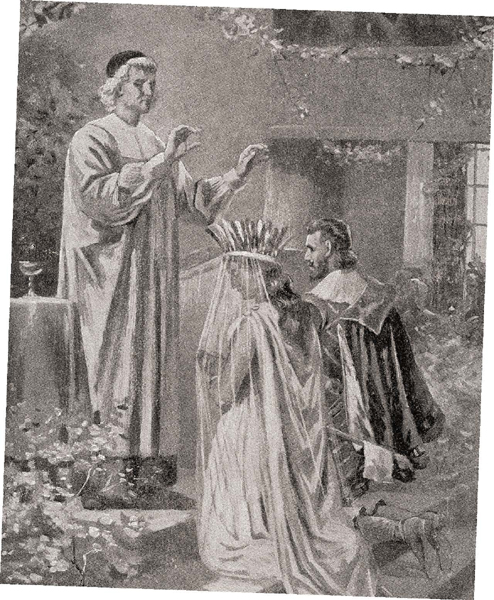
POCAHONTAS
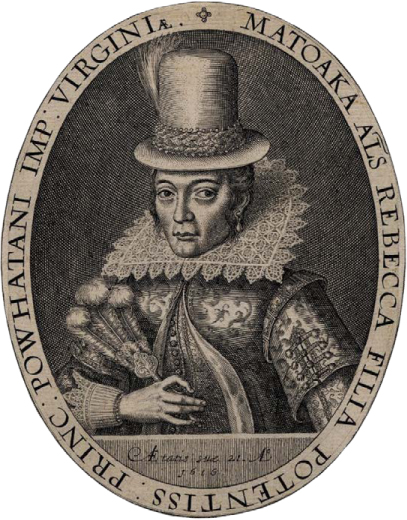
JOHN ROLFE
Pocahontas took the name Rebecca before marrying Englishman John Rolfe in 1614. This wood engraving (right) was made of her in England in 1616.
A WOMAN OF MANY NAMES
Pocahontas was the Powhatan girls nickname! She was better known as Matoaka among her people. There are disagreements about the nicknames meaning. It could have meant spoiled child or playful one. European historians used her nickname in their records, though.
THE MYTH :
THE MAYFLOWER WAS A LARGE SHIP OF PILGRIMS READY TO START OVER IN THE NEW WORLD.
THE FACTS :
The Mayflower was only about 100 feet (30.5 m) long and 25 feet (7.6 m) wide. However, it held 102
Next page
